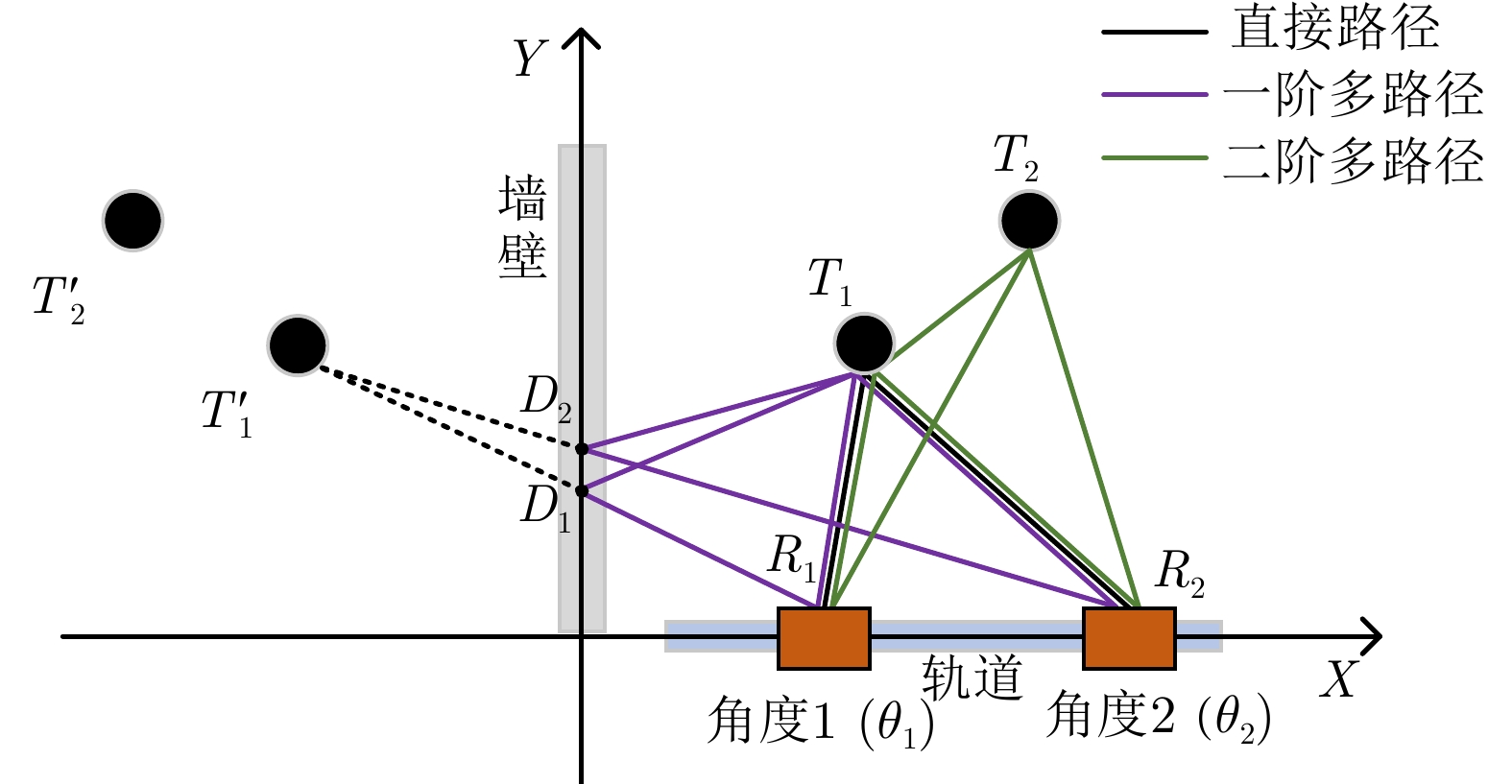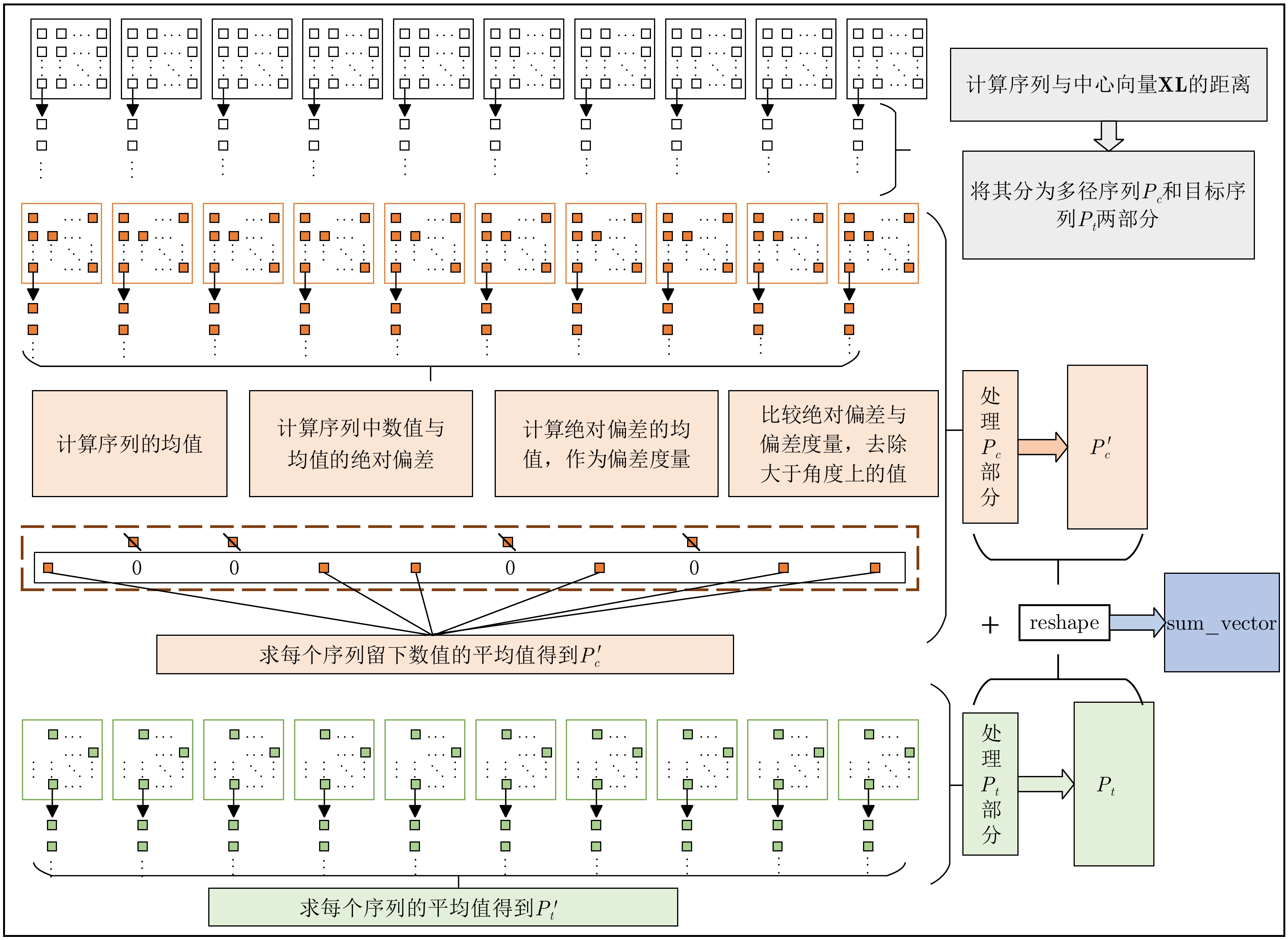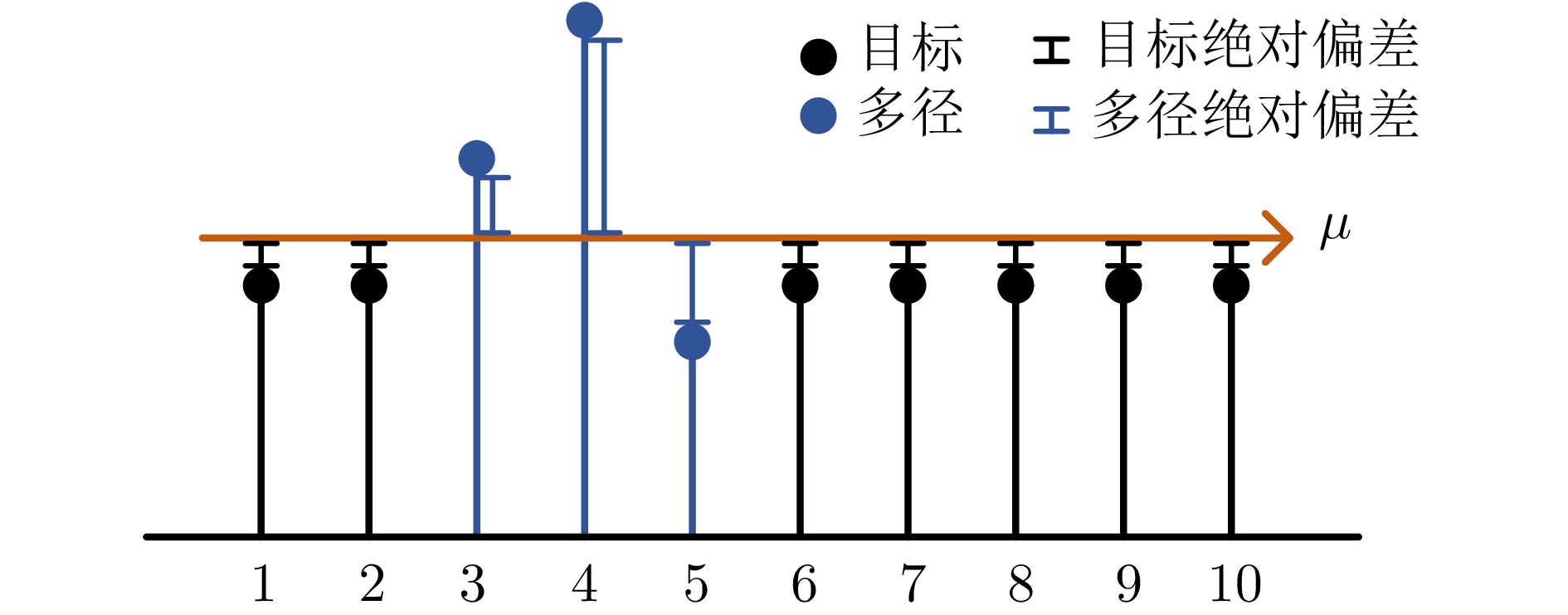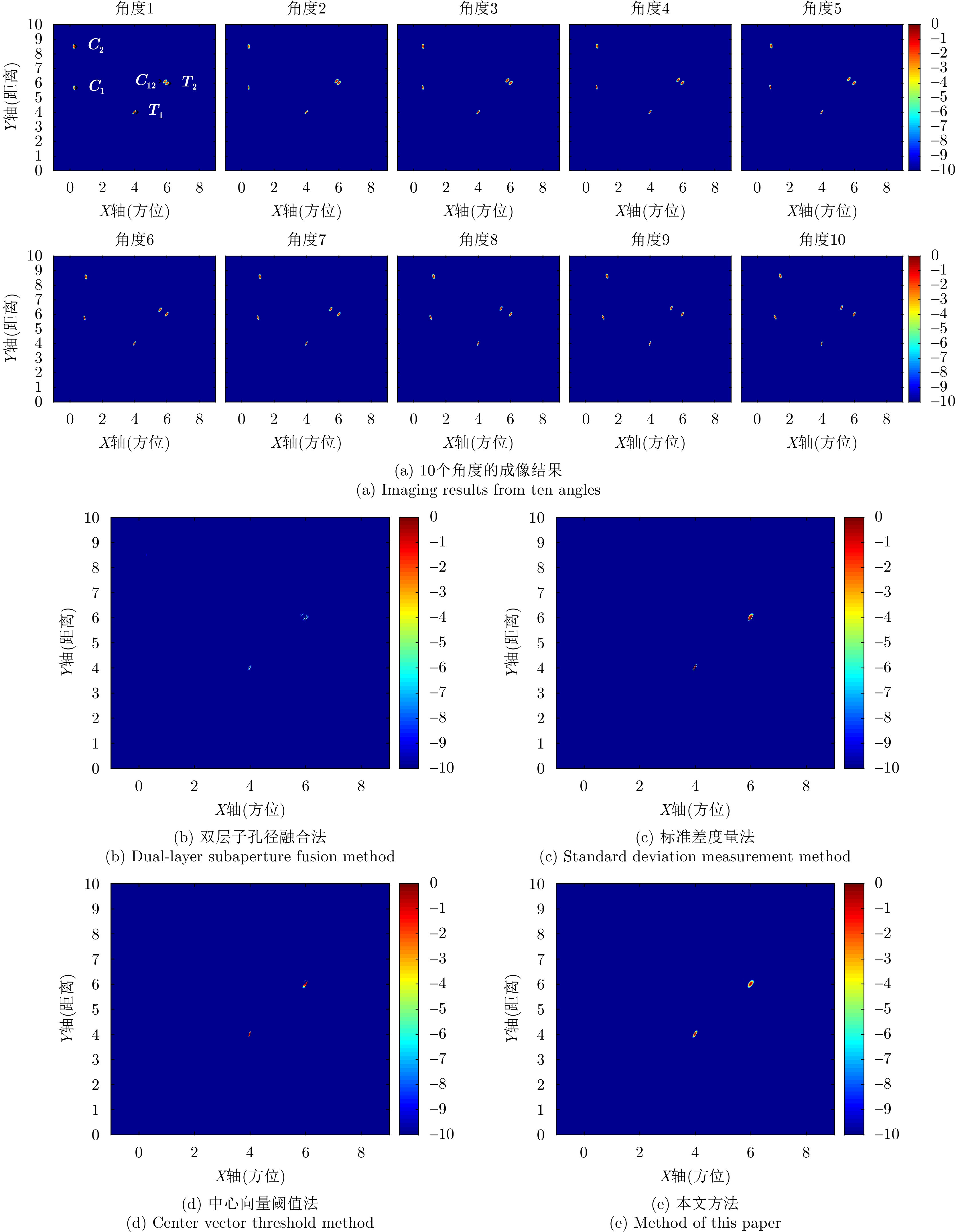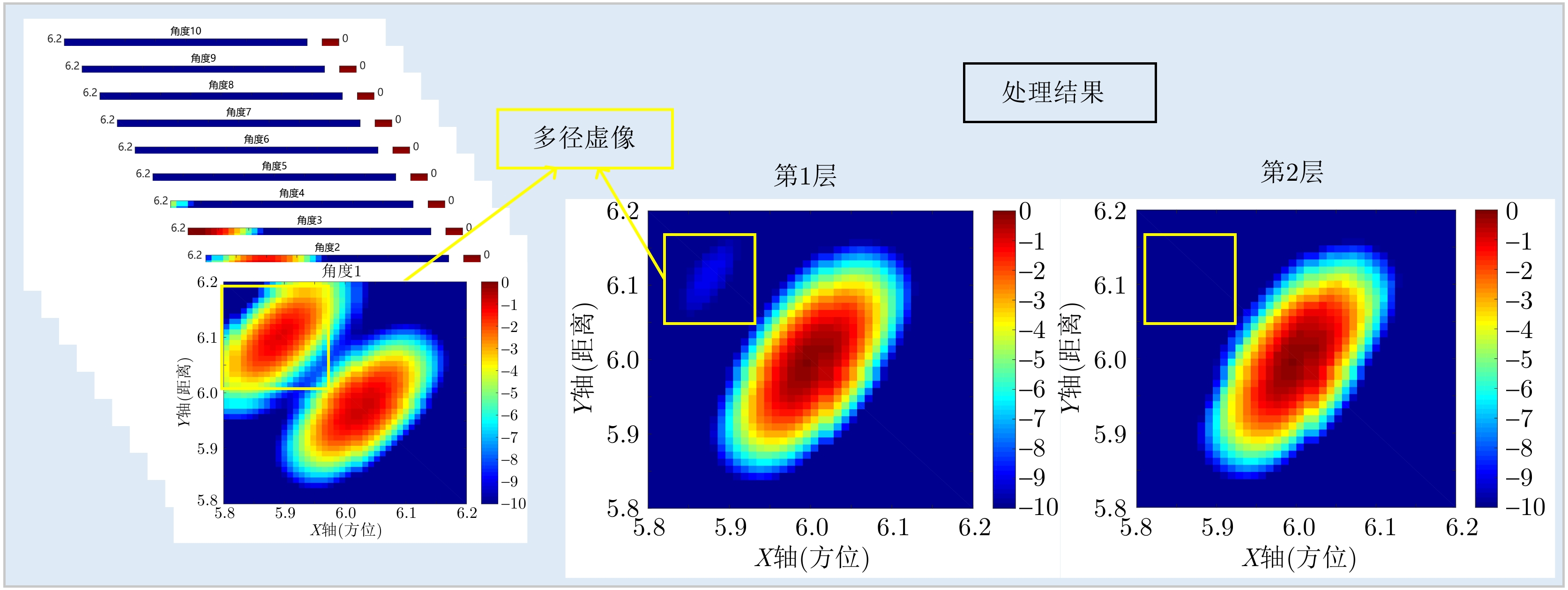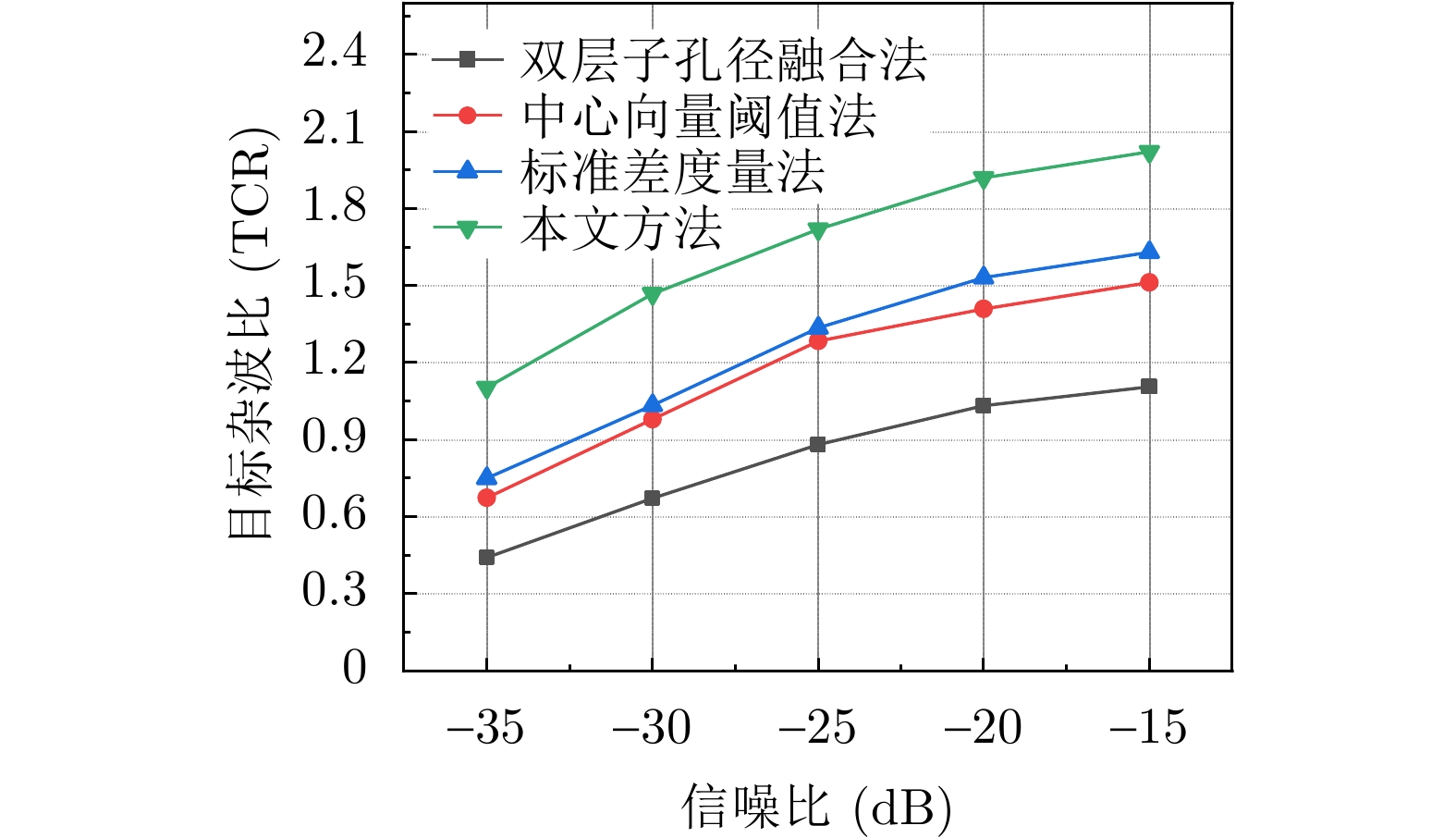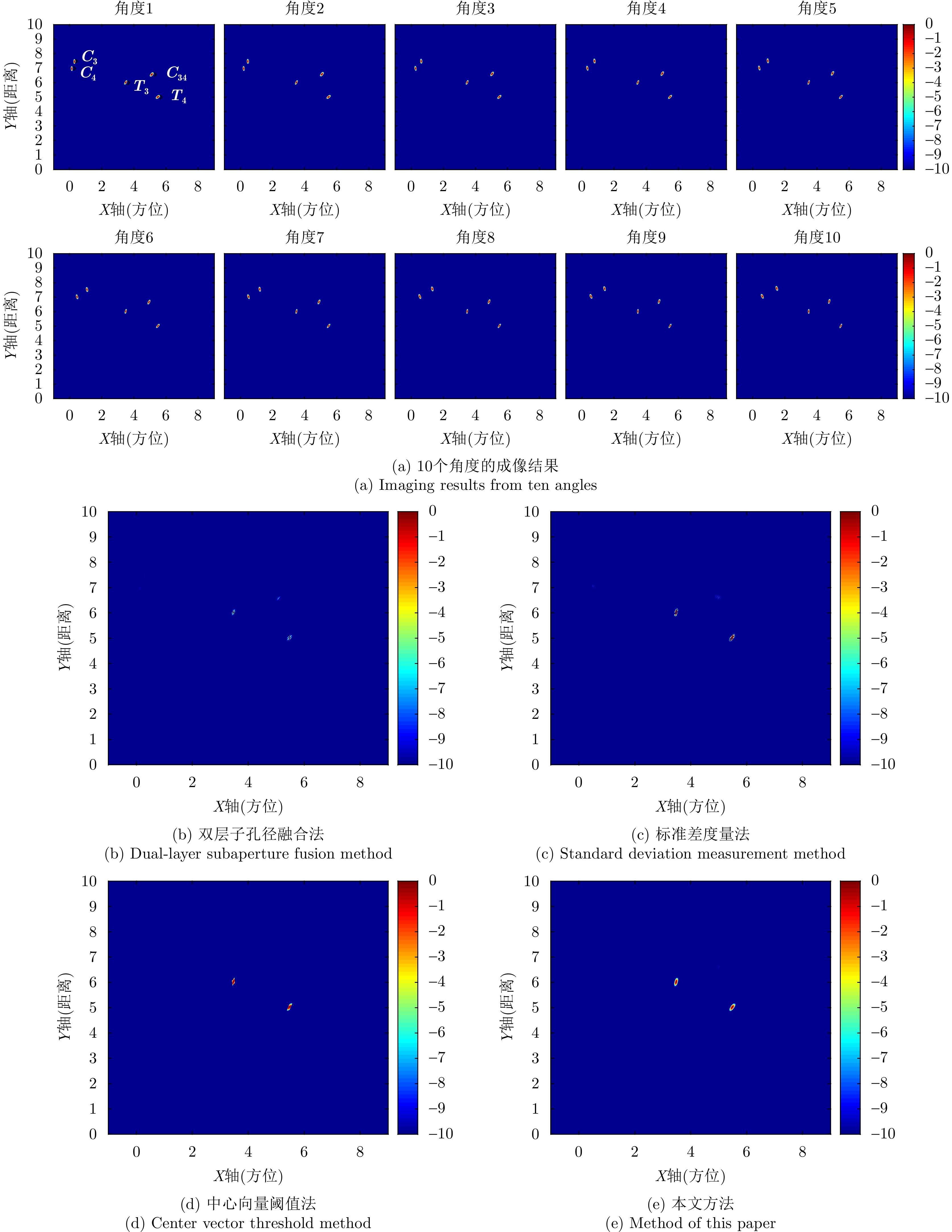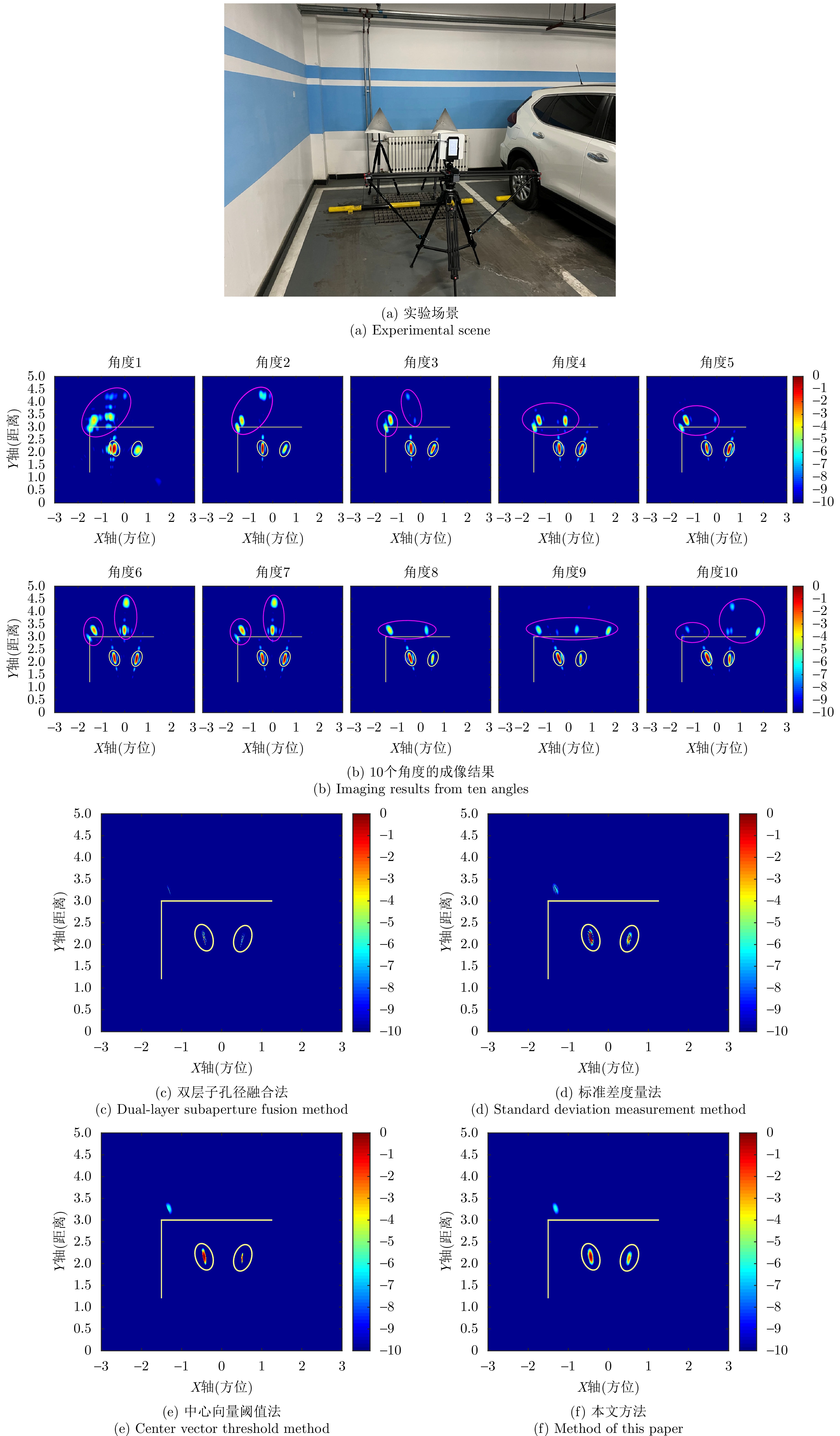| [1] |
ANGHEL A, VASILE G, CACOVEANU R, et al. Scattering centers detection and tracking in refocused spaceborne SAR images for infrastructure monitoring[J]. IEEE Transactions on Geoscience and Remote Sensing, 2015, 53(8): 4379–4393. doi: 10.1109/TGRS.2015.2396773. |
| [2] |
MA Peifeng, LIN Hui, WANG Weixi, et al. Toward fine surveillance: A review of multitemporal interferometric synthetic aperture radar for infrastructure health monitoring[J]. IEEE Geoscience and Remote Sensing Magazine, 2022, 10(1): 207–230. doi: 10.1109/MGRS.2021.3098182. |
| [3] |
CAO Jiaxuan, DING Yipeng, PENG Yiqun, et al. A machine learning-based algorithm for through-wall target tracking by Doppler TWR[J]. IEEE Transactions on Instrumentation and Measurement, 2024, 73: 8501609. doi: 10.1109/TIM.2024.3369133. |
| [4] |
XU Hang, LI Yong, LI Yingxin, et al. Through-wall human motion recognition using random code radar sensor with multi-domain feature fusion[J]. IEEE Sensors Journal, 2022, 22(15): 15123–15132. doi: 10.1109/JSEN.2022.3183292. |
| [5] |
CHAN Y K and KOO V C. An introduction to synthetic aperture radar (SAR)[J]. Progress In Electromagnetics Research B, 2008, 2: 27–60. doi: 10.2528/PIERB07110101. |
| [6] |
WEI Ziping, LI Bin, FENG Tao, et al. Area-based CFAR target detection for automotive millimeter-wave radar[J]. IEEE Transactions on Vehicular Technology, 2023, 72(3): 2891–2906. doi: 10.1109/TVT.2022.3216013. |
| [7] |
IHMEIDA M and SHAHZAD M. Enhanced change detection performance based on deep despeckling of synthetic aperture radar images[J]. IEEE Access, 2023, 11: 95734–95746. doi: 10.1109/ACCESS.2023.3307208. |
| [8] |
HOSSEINY B, AMINI J, and AGHABABAEI H. Structural displacement monitoring using ground-based synthetic aperture radar[J]. International Journal of Applied Earth Observation and Geoinformation, 2023, 116: 103144. doi: 10.1016/j.jag.2022.103144. |
| [9] |
FENG Ruoyu, DE GREEF E, RYKUNOV M, et al. Multipath ghost recognition for indoor MIMO radar[J]. IEEE Transactions on Geoscience and Remote Sensing, 2022, 60: 5104610. doi: 10.1109/TGRS.2021.3109381. |
| [10] |
LUO Haolan, ZHU Zhihao, JIANG Meiqiu, et al. An effective multipath ghost recognition method for sparse MIMO radar[J]. IEEE Transactions on Geoscience and Remote Sensing, 2023, 61: 5111611. doi: 10.1109/TGRS.2023.3335454. |
| [11] |
孔令讲, 郭世盛, 陈家辉, 等. 多径利用雷达目标探测技术综述与展望[J]. 雷达学报, 2024, 13(1): 23–45. doi: 10.12000/JR23134. KONG Lingjiang, GUO Shisheng, CHEN Jiahui, et al. Overview and prospects of multipath exploitation radar target detection technology[J]. Journal of Radars, 2024, 13(1): 23–45. doi: 10.12000/JR23134. |
| [12] |
SETLUR P, SMITH G E, AHMAD F, et al. Target localization with a single sensor via multipath exploitation[J]. IEEE Transactions on Aerospace and Electronic Systems, 2012, 48(3): 1996–2014. doi: 10.1109/TAES.2012.6237575. |
| [13] |
SETLUR P, AMIN M, and AHMAD F. Multipath model and exploitation in through-the-wall and urban radar sensing[J]. IEEE Transactions on Geoscience and Remote Sensing, 2011, 49(10): 4021–4034. doi: 10.1109/TGRS.2011.2128331. |
| [14] |
PARK J K, PARK J H, and KIM K T. Multipath signal mitigation for indoor localization based on MIMO FMCW radar system[J]. IEEE Internet of Things Journal, 2024, 11(2): 2618–2629. doi: 10.1109/JIOT.2023.3292349. |
| [15] |
DING Rui, WANG Zhuang, JIANG Libing, et al. Radar target localization with multipath exploitation in dense clutter environments[J]. Applied Sciences, 2023, 13(4): 2032. doi: 10.3390/app13042032. |
| [16] |
谭云华, 王李波, 李廉林. 一种抑制探地/穿墙成像多径虚假目标的新型概率模型: 数值研究[J]. 雷达学报, 2015, 4(5): 509–517. doi: 10.12000/JR15066. TAN Yunhua, WANG Libo, and LI Lianlin. A novel probability model for suppressing multipath ghosts in GPR and TWI imaging: A numerical study[J]. Journal of Radars, 2015, 4(5): 509–517. doi: 10.12000/JR15066. |
| [17] |
AN Daoxiang, WANG Wu, and CHEN Leping. Extended subaperture imaging method for airborne low frequency Ultrawideband SAR data[J]. Sensors, 2019, 19(20): 4516. doi: 10.3390/s19204516. |
| [18] |
LI Jiaqiang, CHEN Dechang, CHEN Jinli, et al. Multipath virtual image suppression of through-the-wall imaging radar under strong clutter background[J]. Radar Science and Technology, 2020, 18(2): 145–150, 155. doi: 10.3969/j.issn.1672-2337.2020.02.005. |
| [19] |
GUO Ping, WU Fuen, TANG Shiyang, et al. Implementation method of automotive video SAR (ViSAR) based on sub-aperture spectrum fusion[J]. Remote Sensing, 2023, 15(2): 476. doi: 10.3390/rs15020476. |
| [20] |
SHEN Wenting, JIN Liangnian, and LIU Qi. Through-the-wall radar indoor multipath mechanism analysis and mitigation strategies[J]. Radar Science and Technology, 2016, 14(6): 605–613. doi: 10.3969/j.issn.1672-2337.2016.06.009. |
| [21] |
QU Lele, YANG Yongxi, and YANG Tianhong. MIMO through-the-wall radar imaging based on 2D minimum phase coherence factor[J]. Telecommunication Engineering, 2021, 61(12): 1534–1539. doi: 10.3969/j.issn.1001-893x.2021.12.011. |
| [22] |
XU Qiang, JIN Tian, and QIU Lei. “Ghost” suppression for through-the-wall radar with MIMO antenna arrays based on multi-feature combination[J]. Modern Electronics Technique, 2015, 38(19): 1–7. doi: 10.3969/j.issn.1004-373X.2015.19.001. |
| [23] |
FENG Ruoyu, DE GREEF E, RYKUNOV M, et al. Multipath ghost recognition and joint target tracking with wall estimation for indoor MIMO radar[J]. IEEE Transactions on Radar Systems, 2024, 2: 154–164. doi: 10.1109/TRS.2024.3354509. |
| [24] |
YANG Yiping, CHEN Chuan, JIA Yong, et al. Non-line-of-sight target detection based on dual-view observation with single-channel UWB radar[J]. Remote Sensing, 2022, 14(18): 4532. doi: 10.3390/rs14184532. |
| [25] |
ZHANG Wei, XU Zihan, GUO Shisheng, et al. MIMO through-wall-radar down-view imaging for moving target with ground ghost suppression[J]. Digital Signal Processing, 2023, 134: 103886. doi: 10.1016/j.dsp.2022.103886. |
| [26] |
GUO Shisheng, CHEN Jiahui, SHI Zhenpeng, et al. Graph matching based image registration for multi-view through-the-wall imaging radar[J]. IEEE Sensors Journal, 2022, 22(2): 1486–1494. doi: 10.1109/JSEN.2021.3131326. |
| [27] |
PEI Jifang, HUANG Yulin, HUO Weibo, et al. SAR automatic target recognition based on multiview deep learning framework[J]. IEEE Transactions on Geoscience and Remote Sensing, 2018, 56(4): 2196–2210. doi: 10.1109/TGRS.2017.2776357. |
| [28] |
QU Lele, WANG Chang’an, YANG Tianhong, et al. Enhanced through-the-wall radar imaging based on deep layer aggregation[J]. IEEE Geoscience and Remote Sensing Letters, 2022, 19: 4023705. doi: 10.1109/LGRS.2022.3171714. |
| [29] |
DING Lei, ZHENG Kai, LIN Dong, et al. MP-ResNet: Multipath residual network for the semantic segmentation of high-resolution PolSAR images[J]. IEEE Geoscience and Remote Sensing Letters, 2022, 19: 4014205. doi: 10.1109/LGRS.2021.3079925. |
| [30] |
KANG M S and BAEK J M. SAR image reconstruction via incremental imaging with compressive sensing[J]. IEEE Transactions on Aerospace and Electronic Systems, 2023, 59(4): 4450–4463. doi: 10.1109/TAES.2023.3241893. |
| [31] |
TANG Junkui, LIU Zheng, RAN Lei, et al. Enhancing forward-looking image resolution: Combining low-rank and sparsity priors[J]. IEEE Transactions on Geoscience and Remote Sensing, 2023, 61: 5100812. doi: 10.1109/TGRS.2023.3237332. |
| [32] |
BONFERT C, RUOPP E, and WALDSCHMIDT C. Improving SAR imaging by superpixel-based compressed sensing and backprojection processing[J]. IEEE Transactions on Geoscience and Remote Sensing, 2024, 62: 5209212. doi: 10.1109/TGRS.2024.3385027. |
| [33] |
LIN Yun, ZHAO Jiameng, WANG Yanping, et al. SAR multi-angle observation method for multipath suppression in enclosed spaces[J]. Remote Sensing, 2024, 16(4): 621. doi: 10.3390/rs16040621. |
| [34] |
BERGER T and HAMRAN S E. Harmonic synthetic aperture radar processing[J]. IEEE Geoscience and Remote Sensing Letters, 2015, 12(10): 2066–2069. doi: 10.1109/LGRS.2015.2447517. |
| [35] |
邢孟道, 马鹏辉, 楼屹杉, 等. 合成孔径雷达快速后向投影算法综述[J]. 雷达学报, 2024, 13(1): 1–22. doi: 10.12000/JR23183. XING Mengdao, MA Penghui, LOU Yishan, et al. Review of fast back projection algorithms in synthetic aperture radar[J]. Journal of Radars, 2024, 13(1): 1–22. doi: 10.12000/JR23183. |




 Submit Manuscript
Submit Manuscript Peer Review
Peer Review Editor Work
Editor Work

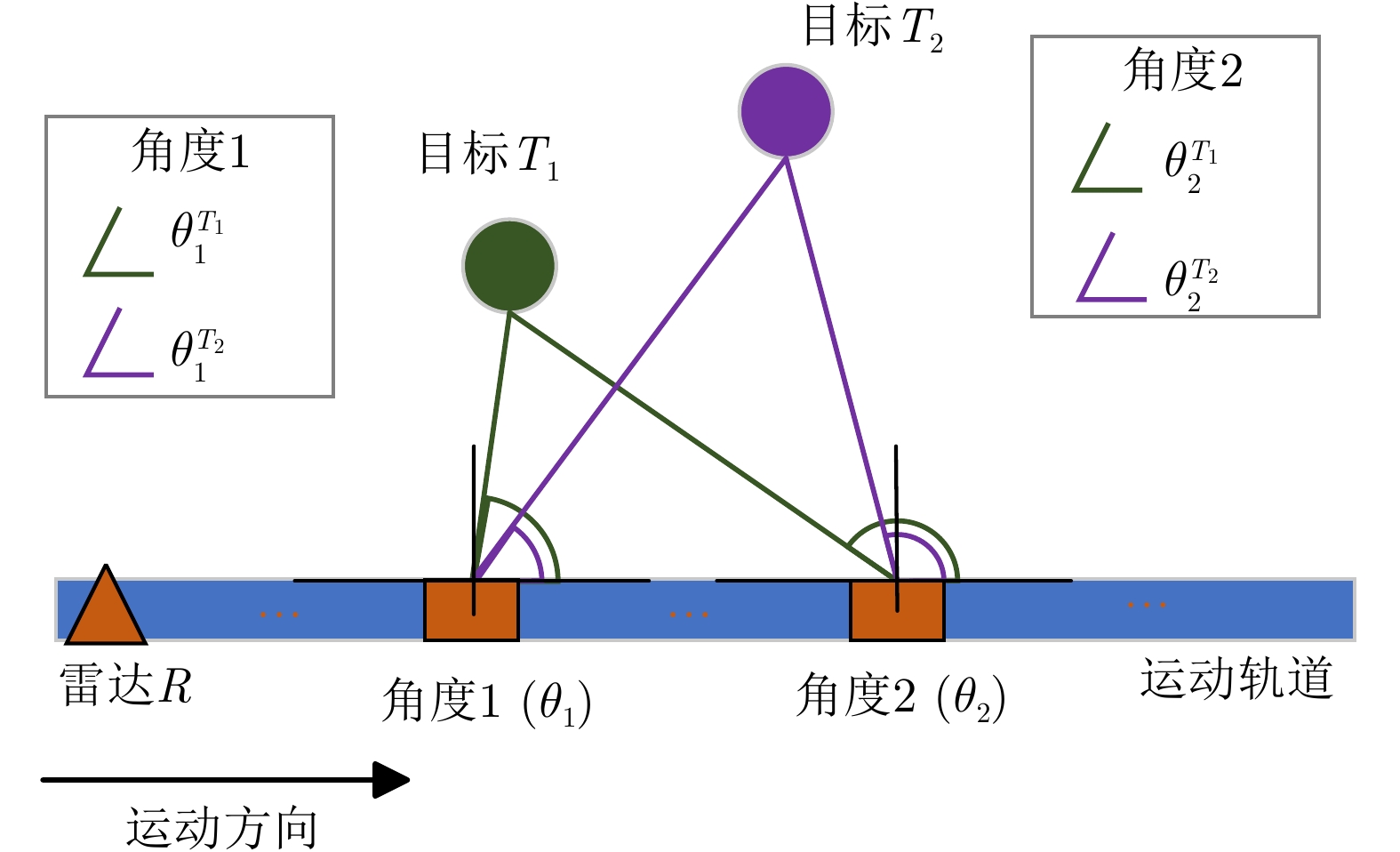



 DownLoad:
DownLoad:
